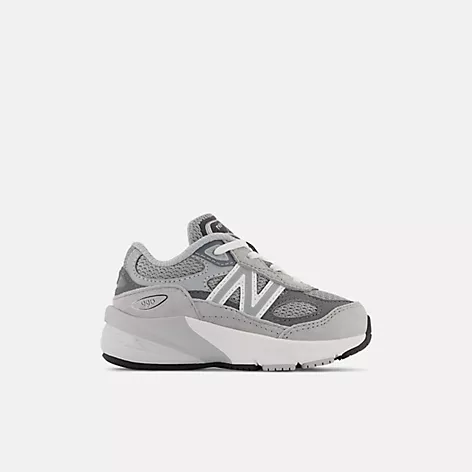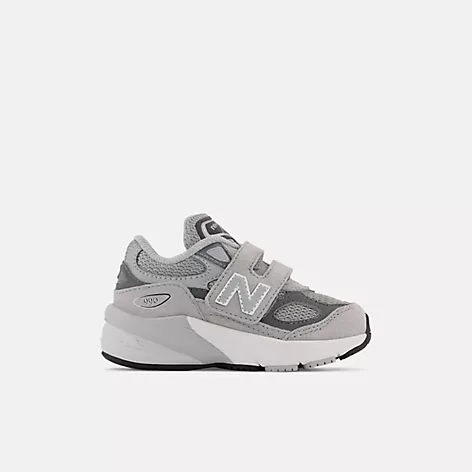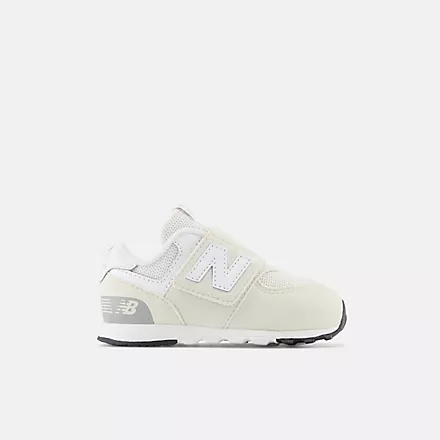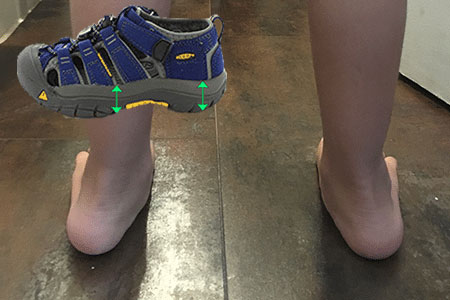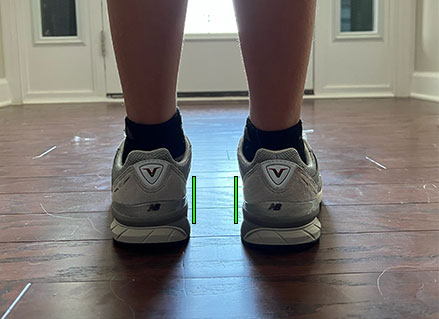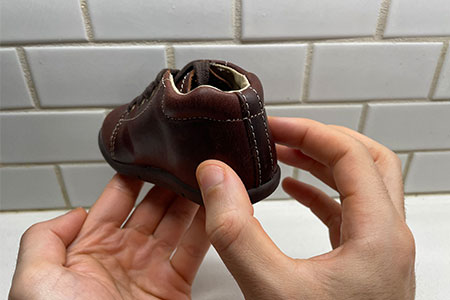Best Shoes for Children with Muscle Weakness — Lightweight, Flexible, and with Extra Arch and Heel Support!

Has your child been diagnosed with muscle weakness (hypotonia)? The best way I like to describe muscle weakness is as a decreased level of tone in the child’s muscles, meaning that the muscles feel too soft and too relaxed. I am going to show you a list of the best shoes for children with muscle weakness based on my many years of shoe fitting experience.
Common Misconceptions About Hypotonia
I want to clarify a common misconception about muscle weakness. Several families associate muscle weakness with children being weak. This is far from the truth, muscle weakness is a stability problem, not a strength problem. Your child can be incredibly strong and still have muscle weakness.
Depending on the underlying cause, muscle weakness can appear at any age, so it’s important for parents to keep a close eye on the following symptoms: Does your child have trouble standing, walking, climbing stairs, getting off the floor, running and jumping? Having muscle weakness can be challenging and it’s often a lifelong condition, so your child will need to learn coping mechanisms.
I am here to help you find the correct type of shoes for your child. The fact is that when children are diagnosed with muscle weakness they usually deal with the following conditions:
- Poor Posture
- Walking with a wide base
- Pronation
- Ligament & joint laxity
My Experience Fitting Shoes for Children with Muscle Weakness
Pediatricians and physical therapists refer families to our way to have the child’s feet evaluated and fitted for shoes. Over the years I became familiar with the best shoes for children with muscle weakness.
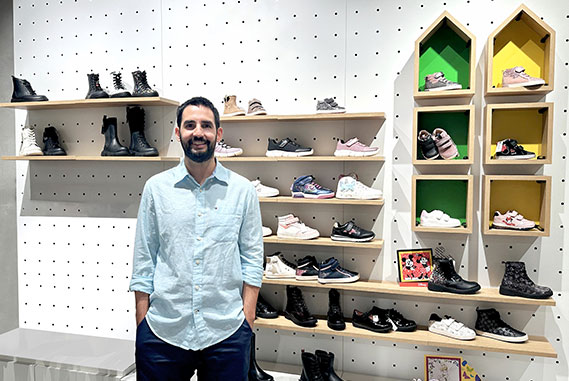
Pro Tip: If you’re pressed for time here is a list of the best shoes for kids with muscle weakness.
How Can Shoes Help Children with Muscle Weakness?
Certain shoes can help improve your child’s overall posture by allowing your child to walk and run straighter. I know exactly which shoes are better for a child with low muscle weakness, and I will show them to you shortly. Depending on how much pronation your child is experiencing we might have to try a pair of orthotics as well.
I want to clarify that the correct type shoes and orthotics won’t make your child’s hypotonia go away, simply because muscle tone doesn’t really change. However, they will improve your child’s walking gait, overall posture, and prevent your child’s feet and legs from easily getting tired.
The shoes I recommend can guide your child’s feet into proper alignment while also helping your child feel more confident and stable.
What Makes the Shoes I Recommend Effective for Kids with Muscle Weakness?
1️⃣ Substantial Outsoles: This feature helps align your kids’ feet properly, providing a stable base for your child’s feet.
This feature is also going to prevent your child’s feet from collapsing and turning inwards, allowing your child to walk and run straighter. Let me show you the difference in support between one of the shoes I recommend and a different style. Do you notice how the shoe on the right has a much thicker outsole compared to the shoe on the left?
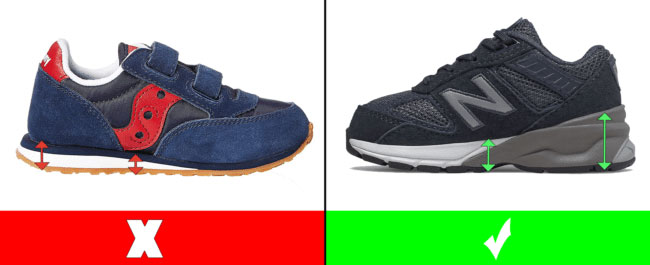
2️⃣ Firm Heel Counters: This feature is going to prevent your child’s feet from collapsing and turning inwards. Pronation is usually found in children with flat feet, but it can come from the ankles too.
Shoes with firm heel counters help prevent the ankles from rolling inwards or outwards. Let me show you the difference in ankle support between one of the shoes I recommend and a different style. Always press on the heel counter of the shoes and make sure it feels firm before buying them.

3️⃣ Lightweight and Flexible: The shoes need to be supportive but lightweight and flexible at the same time to prevent your child’s feet and legs from easily getting tired. Your children’s shoes should bend at the ball of the foot but not further.
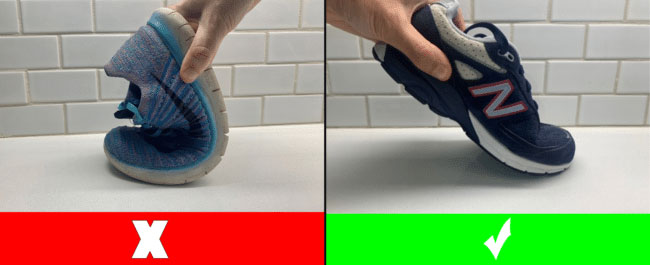
Why Are Shoes Important for Children with Muscle Weakness?
After helping hundreds of children with flat feet, rolled ankles, low muscle tone, knock knees, etc. I have experienced first hand how the correct type of shoes can be life-changing.
When children have muscle weakness they cannot use their strength effectively because the muscles are simply not aligned for efficient activation. This means that your child has to use more energy during each step and fatigues more quickly.
In other words, when foot posture is not in alignment then your child’s body has to recruit more muscles for each movement, which leads to an increase in muscle fatigue, tightness and strain. For example, let’s say that a child who walks normally has to recruit 200 muscles when taking a step. In a compensation state where children are dealing with muscle weakness they might need to recruit 400 muscles just to make that same movement.
The consequences of faulty foot alignment and mechanics range from impaired performance to general foot and leg pain, which can result in limitations in walking. Since walking will be vital for your child’s entire lifetime, I suggest parents be proactive and don’t take the “wait and see approach” when it comes to treating their child’s foot conditions. Waiting for your child’s foot condition to resolve on its own can only lead to the condition getting worse.
Shoes for Kids with Muscle Weakness – Before and After Images!
Before Image
Let’s start by taking a look at an image of a child with muscle weakness standing barefoot. Do you notice how the child’s feet are collapsing and turning inwards?
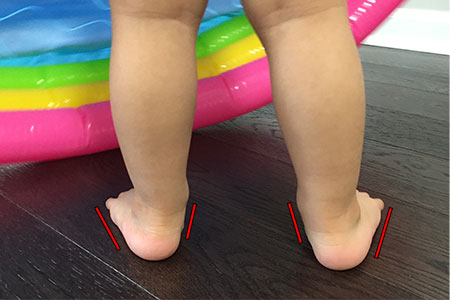
After Image
Now let’s take a look at an image of the same child wearing a pair of the supportive shoes I recommend. Do you notice how the child’s feet are a lot straighter? The substantial outsole and the firm heel counter of the shoes are preventing the child’s feet from collapsing and turning inwards:
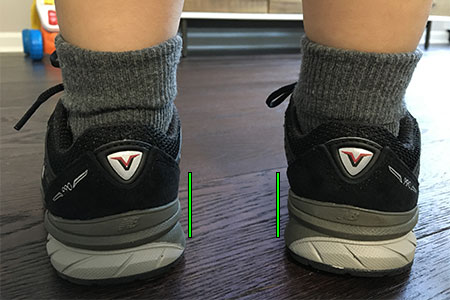
What a difference the correct type of shoes can make! By the way, these are not orthopedic shoes, just regular sneakers that simply provide good arch and ankle support.
How to Retrieve Your Child’s Exact Foot Length and Shape
I am going to provide you with a selection of the best shoes for children with low muscle weakness shortly, but before I do so, I want to make sure that you know your child’s exact foot size and shape. For example, do you know if your child’s feet are narrow, medium, wide, or extra wide? Do you know if your child has a high instep or not? I created a different resource that will help you retrieve exactly what shoe size your child should wear.
Best Shoes for Children with Low Muscle Weakness
The shoes below can fit children with medium (M), wide (W), or extra wide (XW) feet. Disclosure: Some links in this post may be affiliate links and we may receive a small commission (at no extra cost to you) when you click our links and make purchases. This allows us to create free content and resources for many families around the world.
Lace-Up Closure
- New Balance shoe style 990v6
- Fits toddlers with medium, wide, or extra wide feet
- Strong rubber outsole and cushioned midsoles
- Suede/mesh upper provides durability and breathability
- Order this shoe half a size larger than your toddler’s current foot size
- New Balance shoe style 990v6
- Fits toddlers with medium, wide, or extra wide feet
- Strong rubber outsole and cushioned midsoles
- Suede/mesh upper provides durability and breathability
- Order this shoe half a size larger than your toddler’s current foot size
- Stride Rite shoe style Emilia
- Fits toddlers with medium, wide, or extra wide feet
- Strong rubber outsole and a cushioned midsole
- 100% leather made
- Order this shoe a whole size larger than your toddler’s current foot size
- Stride RIte shoe style Elliot
- Fits toddlers with medium, wide, or extra wide feet
- 100% leather made
- Seamless construction that cradles the foot’s natural shape
- Order this shoe a whole size larger than your toddler’s current foot size
- Stride RIte shoe style Elliot
- Fits toddlers with medium, wide, or extra wide feet
- 100% leather made
- Seamless construction that cradles the foot’s natural shape
- Order this shoe a whole size larger than your toddler’s current foot size
- New Balance shoe style 990v6
- Fits toddlers with medium, wide, or extra wide feet
- Suede/mesh upper provides durability and breathability
- Order this shoe half a size larger than your toddler’s current foot size
- New Balance shoe style 2022
- Fits toddlers with medium or wide feet
- Suede/mesh upper provides durability and breathability
- Order this shoe half a size larger than your toddler’s current foot size
- New Balance shoe style 990v6
- Fits toddlers with medium, wide, or extra wide feet
- Strong rubber outsole and cushioned midsoles
- Suede/mesh upper provides durability and breathability
- Order this shoe half a size larger than your toddler’s current foot size
Velcro Closure
- Timberland Tracks H&L Boot
- Fits toddlers with medium or wide feet
- Breathable textile lining
- Stable base of support with firm heel counters
- Order this shoe a whole size larger than your toddler’s current foot size
- Saucony Cohesion
- Fits toddlers with medium or wide feet
- Heel grid system for stable cushioning
- Compression molded EVA footbed for comfort
- Order this shoe a whole size larger than your toddler’s current foot size
- New Balance style 990v6
- Fits toddlers with medium, wide, or extra wide feet
- ABZORB midsole absorbs impact through a combination of cushioning and compression resistance
- Removable insoles
- Extra deep
- Order this shoe a half size larger than your child’s current foot size
- New Balance style 574
- Fits toddlers with medium, wide, or extra wide feet
- Generous toe box and instep to accommodate and support your toddler walker’s needs
- Rubber outsole pods designed to stand up to daily wear and tear
- Extra deep
- Order this shoe a whole size larger than your toddler’s current foot size
- Memo style Gabi
- Fits toddlers with medium or wide feet
- Thermoplastic asymmetric stiff heel counter for proper feet protection and stabilization
- Stiff and high ankle support for toe walkers
- Order this shoe half a size larger than your toddler’s current foot size
- Memo style Gabi
- Fits toddlers with medium or wide feet
- Thermoplastic asymmetric stiff heel counter for proper feet protection and stabilization
- Stiff and high ankle support for toe walkers
- Order this shoe half a size larger than your toddler’s current foot size
- New Balance style 990v4
- Fits toddlers with medium or wide feet
- Generous toe box and instep to accommodate and support your toddler walker’s needs
- Extra deep
- Order this shoe a whole size larger than your toddler’s current foot size
The goal of these shoes is to stabilize your child while still allowing for healthy and natural foot development.
If your child happens to have narrow feet leave me a comment below and I will send you specific shoe recommendations.
Do Shoes with Laces Help Provide Better Support and Stability?
I recommend shoes that come with shoelaces instead of velcro closure as shoelaces provide better support and stability than velcro shoes. Always make sure that you are tying your kids’ shoes comfortably tight. I understand that for most families it’s hard to keep up with untied shoelaces, but trust me when I tell you that they make a big difference in helping and improving your child’s stability.
Do You Believe That Your Child Might Benefit From Wearing Orthotics?
Depending on the degree of your child’s muscle weakness and how much your child is pronating, we might have to consider fitting an orthotic inside the shoes for extra support. I suggest that we start with trying a pair of supportive shoes and if after 2 months of wearing the shoes your child’s walking gait and posture doesn’t improve we will proceed by trying a pair of orthotics.
If you believe your child is a candidate for orthotics I suggest that you email me so I can guide you on what steps to take:
Even though there is no cure for hypotonia, it can be managed. Physical therapy and wearing the correct type of shoes and orthotics can help your child gain stability and confidence.
Have you found a specific shoe or orthotic that has worked well for your child with muscle weakness? Share your findings below so other families can benefit from your experiences.


